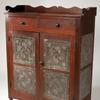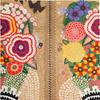SUPERB WORKS LEAD CHRISTIE’S SPRING SALE OF JAPANESE AND KOREAN ART
- NEW YORK, New York
- /
- March 09, 2012

New York – On March 21, Christie’s will offer 190 works in the spring sale of Japanese and Korean Art, including screens, ceramics, lacquers, bronzes and armors. Japanese highlights include a pair of six-panel screens from the Momoyama period and an incense burner dating to the Edo period. A 19th century eight-panel screen, porcelain jar, and porcelain water dropper from the Joseon period will lead the Korean lots. The sale is expected to realize in excess of $4.8 million.
Japanese Art
Highlighting the Japanese works of art are a pair of six-panel screens of Scenes in and around the capital (Rakuchu rakugai zu) (estimate: $700,000 – 900,000). Painted in the late 16th-early 17th century, during the Momoyama period, these panels depict a variety of daily occurrences in and around the capital city, including an archery contest on the verandah of the Sanjusangendo, a pilgrim entering the Great Buddha Hall, and an Okuni kabuki performance. The anonymous artist has taken some artistic liberties, depicting both the Kitano Shrine, erected in 1607, and the Great Buddha Hall, which was burned down in 1602.
Also among the Japanese highlights is an iron and slip-decorated and incised stoneware incense burner by Ogata Kenzan (estimate: $150,000 – 200,000). This burner is dated 1715, making it a precious document of the early years of the artist’s so-called Chojiyamachi period, as few pieces by the artist can be dated. The burner has a jewel-grasping lion on the knob of the lid and is decorated in the style of Chinese Cizhou ware with a geometric band, clouds, and a chrysanthemum arabesque motif.

A Shiwakawatsumi Nimai Do Gusoku (leather-clad two-piece Curiass armor) made during the Edo period of 18th century Japan will be offered, as well (estimate: $150,000 – 200,000). The elaborate armor is comprised of sixty-two plates and is of koshozan form. It is adorned with embellishments of butterflies, a phoenix, a russet iron menpo with a detachable nose, as well as various flora and fauna.
Also featured in the sale is Ike Taiga’s calligraphy book of Tang poetry, known as “Suiryujo,” which means “Flowing Water Album” (estimate: $150,000 – 200,000). The accordion-style folding album was lost until 2005, when it was rediscovered and exhibited at the Tokyo National Museum. The book features poems drawn from the Complete Poetry of the Tang Dynasty (Quantangshi) and is written in five different calligraphy scripts.
Korean Art
Leading the Korean portion of the sale is an important blue and white porcelain jar with dragons and tigers (stimate on request). Executed during the Joseon Dynasty of the 18th century, the jar is a true masterpiece, decorated with a rare confrontation between dragons and tigers, which are both prevalent in Korean mythology. The dragon rules the oceans, rivers, lakes, rains, and floods, while the tiger is invested with the power to repel evil spirits. The depiction of both creatures together corresponds to the Daoist duality of yin (active, masculine principle of nature) and yang (passive, feminine principle of nature).
Also of the Joseon Dynasty is a 19th century blue and white octagonal porcelain water dropper, featuring the head of a dragon (estimate: $50,000 – 60,000). Despite the fact that the diameter is less than five inches, the rather elaborate piece has been executed with the utmost attention to detail. The skilled artist was able to create a powerful and dynamic scene, in which the fierce dragon seems to protect a coveted flaming pearl.

From a private American collection is Daoist Immortals on their Way to Xiwangmu’s banquet , a 19th century eight panel screen. Over eleven feet wide, the sophisticated screen depicts the spacious and elegant palace of Xiwangmu, Queen Mother of the West. Elaborate smaller scenes are depicted throughout the screen, including the fairy maidens preparing for the banquet, Xiwangmu and her consort, Dongwanggong, enthroned at the center, and immortals arriving for the banquet.
Dancers by the renowned Kim Kichang will also be offered (estimate: $8,000 – 12,000). Executed in ink and color on paper, the artist mounted four paintings as a four-panel screen. Figures adorned with costumes and masks dance and play musical instruments in the lively scene.




10270x400_c.jpg)




100x100_c.jpg)









100x100_c.jpg)


